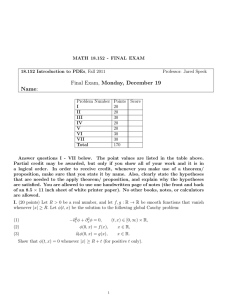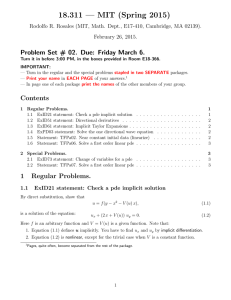Wave equation: initial value problem
advertisement
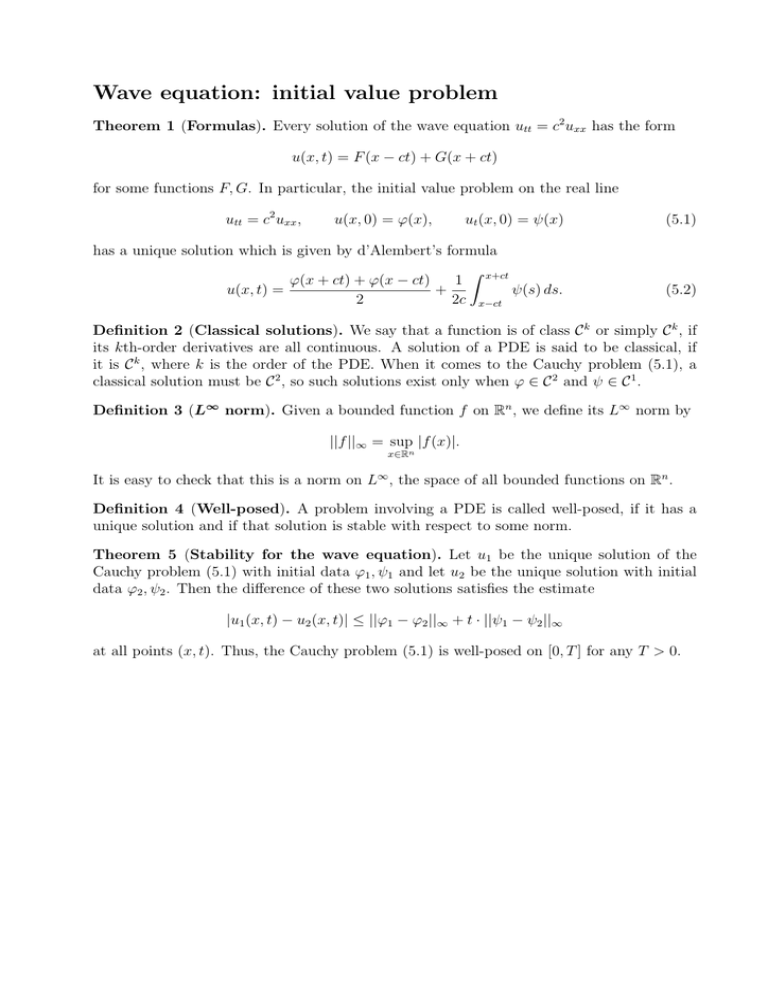
Wave equation: initial value problem Theorem 1 (Formulas). Every solution of the wave equation utt = c2 uxx has the form u(x, t) = F (x − ct) + G(x + ct) for some functions F, G. In particular, the initial value problem on the real line utt = c2 uxx , u(x, 0) = ϕ(x), ut (x, 0) = ψ(x) has a unique solution which is given by d’Alembert’s formula Z 1 x+ct ϕ(x + ct) + ϕ(x − ct) + ψ(s) ds. u(x, t) = 2 2c x−ct (5.1) (5.2) Definition 2 (Classical solutions). We say that a function is of class C k or simply C k , if its kth-order derivatives are all continuous. A solution of a PDE is said to be classical, if it is C k , where k is the order of the PDE. When it comes to the Cauchy problem (5.1), a classical solution must be C 2 , so such solutions exist only when ϕ ∈ C 2 and ψ ∈ C 1 . Definition 3 (L∞ norm). Given a bounded function f on Rn , we define its L∞ norm by ||f ||∞ = sup |f (x)|. x∈Rn It is easy to check that this is a norm on L∞ , the space of all bounded functions on Rn . Definition 4 (Well-posed). A problem involving a PDE is called well-posed, if it has a unique solution and if that solution is stable with respect to some norm. Theorem 5 (Stability for the wave equation). Let u1 be the unique solution of the Cauchy problem (5.1) with initial data ϕ1 , ψ1 and let u2 be the unique solution with initial data ϕ2 , ψ2 . Then the difference of these two solutions satisfies the estimate |u1 (x, t) − u2 (x, t)| ≤ ||ϕ1 − ϕ2 ||∞ + t · ||ψ1 − ψ2 ||∞ at all points (x, t). Thus, the Cauchy problem (5.1) is well-posed on [0, T ] for any T > 0.
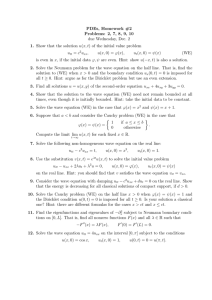
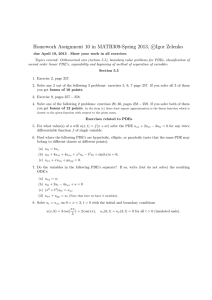
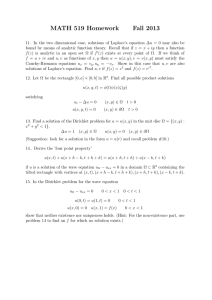

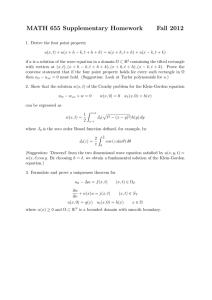
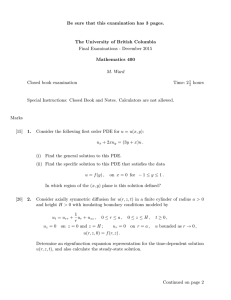

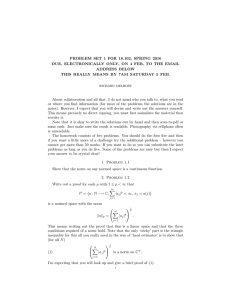
![Mathematics 321 2008–09 Exercises 4 [Due Monday January 12th.]](http://s2.studylib.net/store/data/010730635_1-187d521e2b18d0cc940a7589784fb631-300x300.png)
